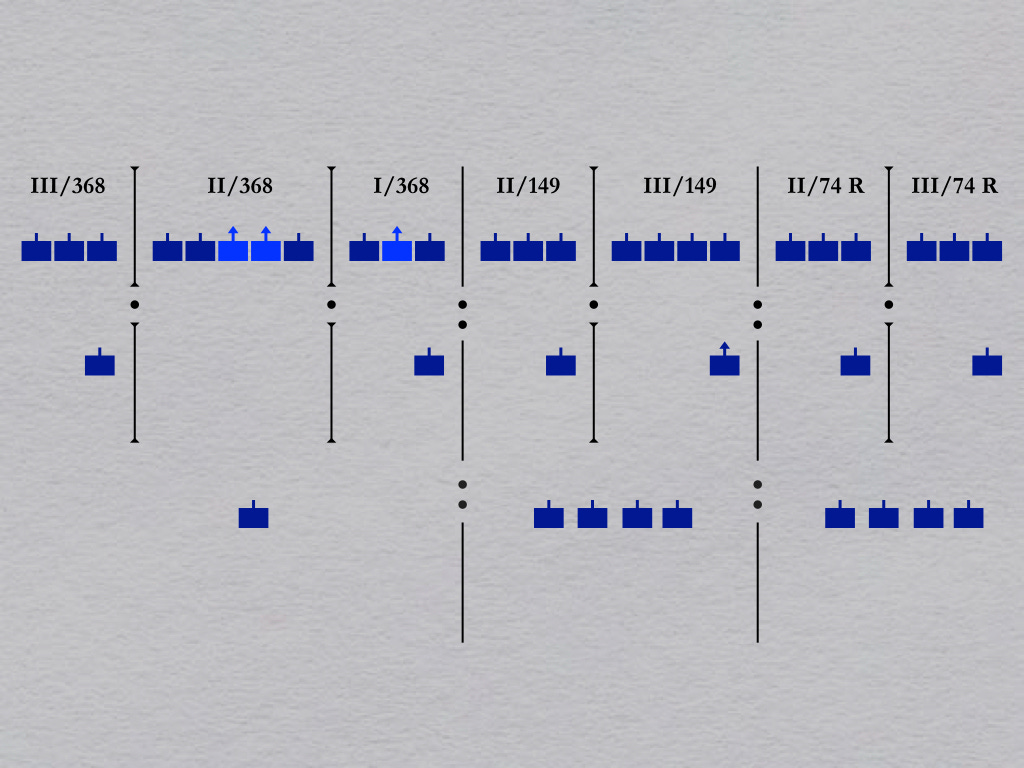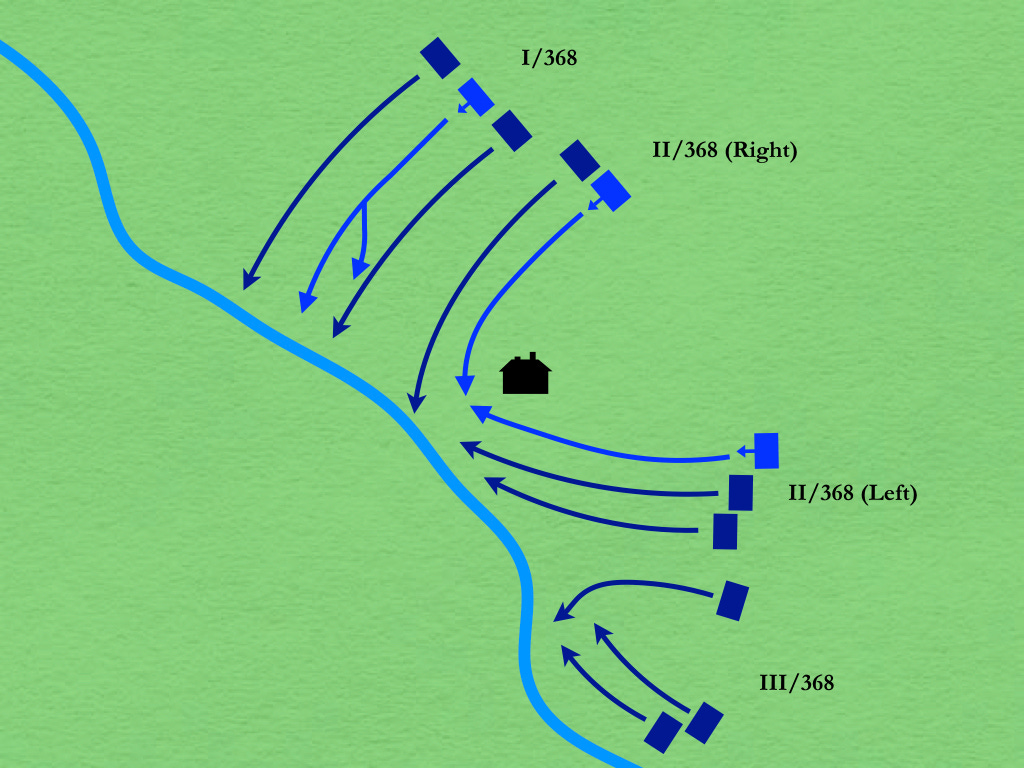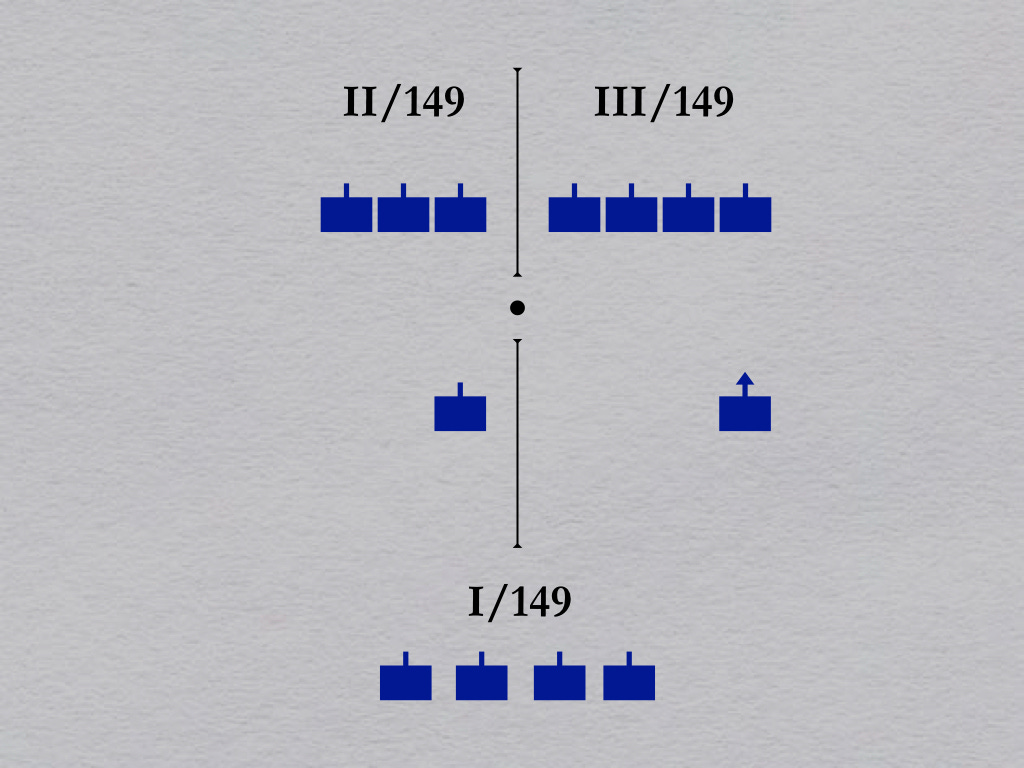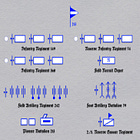Recently, while enjoying yet another splendid article on Big Serge Thought, I ran across an interesting point. “… in 1918,” I read, “only a small portion of the infantry had been trained and equipped according to these new standards and tactics. Therefore, the Germans adopted a mixed solution - each standard infantry regiment (still fighting in a more traditional, stereotyped way) was paired with a single storm platoon, which would lead the charge.”
As this statement ran athwart my longstanding belief in the extensive use of “storm troop tactics” in the German Army of second half of the First World War, this paragraph prompted a good deal of thought. Perhaps, I asked myself, the ratio of one storm platoon to a standard regiment was based on the assumption that the storm platoons in question were those of the army-level assault battalions (Sturmbataillone.) (Unlike most elite assault units of the German armies, these were regularly constituted organizations.)
The first example of the employment of “proper” assault battalions during the German offensives of 1918 is provided, serendipitously, by a set of documents that I happen to have close at hand. Created by the 213rd Division, they deal mostly with preparations for Görz, the attack of the First Army on the Chemin des Dames that began on 27 May 1918.
For this attack, the 213rd Division was extraordinarily well supplied with attachments, one of which was the 1st Assault Battalion (Sturmbataillon 1). Composed of three assault companies, a machine gun company, an infantry gun battery, and a detachment of 12 light Minenwerfer, this unit was in a position to provide each of the three attacking infantry regiments of the division with a reinforced assault company.
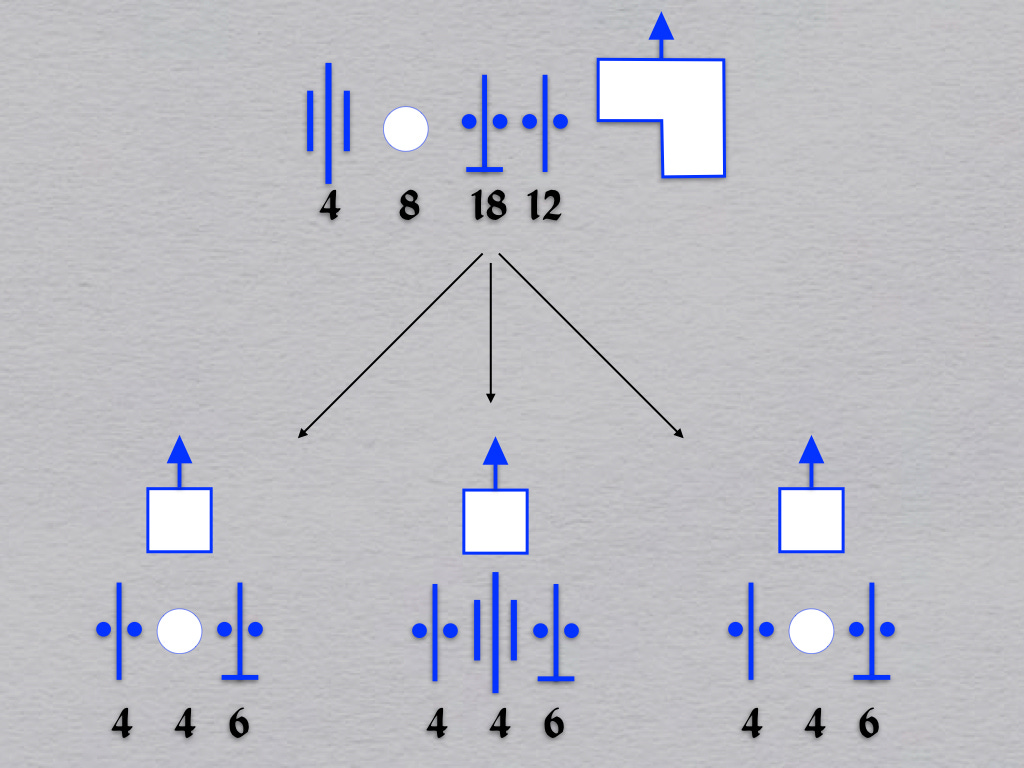
In the course of preparing for this assault, the commander of the infantry of the 213th Division promulgated an order that included a sketch describing the task organization of his three infantry regiments.1 This diagram shows the attachment of companies of the 1st Assault Battalion to battalions of the the 368th Infantry Regiment. More specifically, it shows that two assault companies were attached to the Second Battalion of the 368th (II/368) and one to the First Battalion (I/368) of that regiment.
The logic behind the assignment of the assault companies of the 1st Assault Battalion can be deduced from the map attached to the order. The single assault company attached to I/368 seems to have been charged with the taking of a strong point of some sort located in the middle of the attack sector assigned to the battalion. The two assault companies attached to II/368 were employed in a double-envelopment aimed at the ground on the west side of a railway station. (The open ground on the German side of the station sloped upwards to the east, creating a situation favorable to French machine gunners and unfavorable to attacking German infantry.)
For the sake of the attack on the area west of the railway station, the reinforced battalion was divided into two “assault detachments” (Sturmabteilungen.) Assault Detachment Right (rechte Sturmabteilung), composed of one assault company and one company of II/368, served as the northern wing of the envelopment. Assault Detachment Left (linke Sturmabteilung), which consisted of one assault company and two companies of ordinary infantry, formed the southern half of the pincer maneuver.
The same diagram shows the presence, in the zone assigned to the Third Battalion of the 149th Infantry Regiment (III/149), a unit marked Sturmtrupp. While Germans of the early twentieth century used the word Trupp to refer to units of a variety of sizes, the use of the tactical symbol for a company suggests that the Sturmtrupp in question was larger than a platoon. At the same time, the way that the rectangle was filled, as well as the fact that all three assault companies were already on the diagram, suggests that this unit was something other than an element of the attached assault battalion. Similarly, the absence of any mention of this unit in the otherwise comprehensive division and brigade orders suggests that, rather than being a creature of the 213th Division as a whole, the Sturmtrupp had been organized by the 149th Infantry Regiment.
Thanks to the aforementioned absence of the Sturmtrupp from written orders, which extends to the maps appended to them, we cannot be sure of the role that unit was supposed to play. The position of unit symbols on the infantry company diagram suggests that Sturmtrupp may have served as the reserve company of III/368.
The subject of locally organized assault units is a tricky one. For one thing, the short-lived character of such organizations reduces both the amount of paperwork produced and the odds that such paperwork would find its way into an archive. For another, the absence of any sort of standard resulted in a situation where terms like Sturmtrupp were applied to organizations of various types. Thus, depending on the context, the term might refer to a company or platoon that bore a close resemblance to its counterpart in a regularly constituted assault battalion. At the same time, it might simply indicate that the men of the elite assault unit were slightly younger, slightly stronger, and somewhat more conversant with the new tactics than ordinary members of their company, battalion, or regiment.2
The tale of the attachment of the 1st Assault Battalion to the 213th Division is an anecdote. As such, it tells us little about the methods used by the scores of comparable formations that took part in the great offensives of the spring of 1918. Indeed, if there is any lesson to be drawn from this article it is the need for further research into what Big Serge so rightly identifies as “the precursor to modern infantry tactics.”
Source: Documents of the 213th Infantry Division on file at the Military Archives of the German Federal Archives (BA/MA), PH 8 I/56.
For Further Reading:
To Support, Subscribe, or Share:
Whenever a German infantry division was converted into a triangular formation, the commanding general of one of the two existing infantry brigades took charge of all three of the infantry regiments of the division. In many instances, this command retained the title of the repurposed brigade. Thus, for example, the three infantry regiments of the 213th Division belonged to the 37th Reserve Infantry Brigade.
For an overview of the locally raised assault units of the middle years of the First World War, see the my (grossly overpriced) Storm Troop Tactics. Better yet, subscribe to this Substack, which, will eventually cover all of the matters addressed in the book, but in a way that benefits from a much better range of sources, as well as what little wisdom I may have acquired since putting the aforementioned book to bed in 1988.



